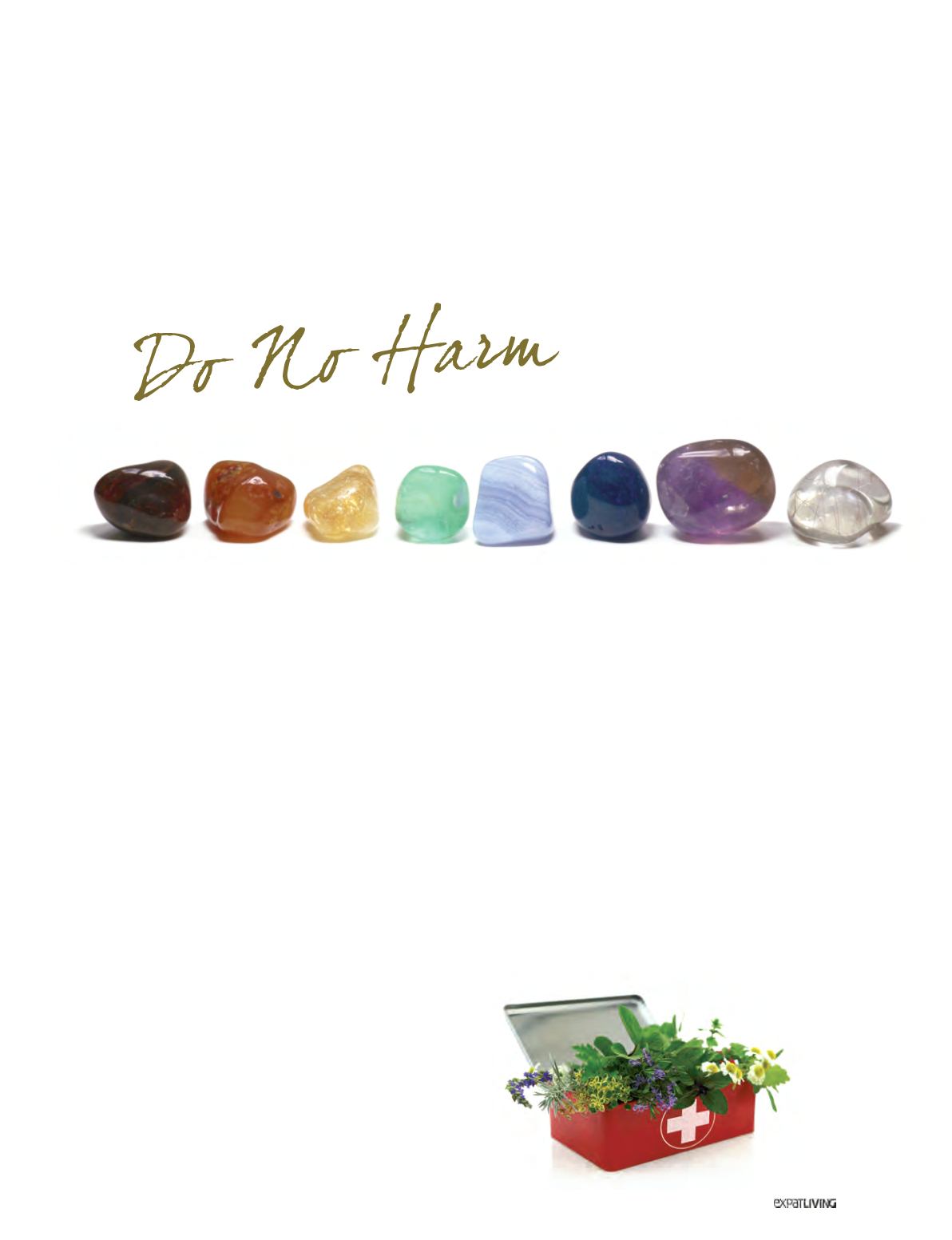

DRUG-FREE OPTIONS
241
February15
First,
By Verne Maree
For those brought up to see mainstream
medicine as the first – or even only –
port of call when ill health strikes, it
can be liberating to discover how many
other options we have at our disposal.
From Ayurveda and acupuncture to
neurotherapy and osteopathy, there’s
a wide range of modalities to choose
from. Here’s a look at just a few.
PART 1:
Complementary and Alternative Medicine 101
As osteopath DR DAVID TIO explains,
what most us call “medicine” actually
refers to one specific systemof medicine
– mainstream or Western medicine.
“Western medicine,” he says, “is
chemical-based medicine that seeks to
understand health and disease in terms
of chemical imbalances in the body, and
to treat illnesses with pharmaceutical
drugs, which are purified chemicals.”
“Because this approach dominates,
it is widely called mainstream
medicine and all other systems are
called ‘complementary and alternative
medicine.’”
Traditional systems and techniques
Other systems include
herba l
medicine
, where the roots, leaves, fruits,
bark, flowers, seeds and other parts of
plants are used to treat illnesses. This
is a major part of
traditional Chinese
medicine
(TCM) and the traditional
medical systems of India (
Ayurveda
),
Indonesia (
Jamu
), various European
and other cultures. One modern variant
is
naturopathy
, which uses food and
food supplements like vitamin pills in
addition to herbs.
These traditional medical systems also
employ additional treatment techniques
such as massage, manipulation,
acupuncture and acupressure. Rather
than being based on chemistry,
traditional systems are often based on
concepts of energy – the
chi
of TCM, for
example; or Ayurveda’s five elements.
Modern systems
There are relatively modern medical
s y s tems , such as
os teopa t hy
and
chiropractic
, which employ
manipulation of the spine as the primary
treatment. These systems are accepted
as mainstream medicine in some
countries, particularly for the treatments
for muscular-skeletal aches and pains.
In fact, says Dr Tio, all conditions
– including asthma and digestive
disorders – can be treated by restoring
the integrity of the body’s muscular-
skeletal system. There is also
cranial
osteopathy
, which
involves very fine
adjustments to
the skull and is
helpful for children
with developmental
problems such as
autism.
Homeopathy
can
be regarded as the
opposite of mainstream medicine.
Whereas mainstreammedical treatment
aims to produce an opposite effect – for
example, to lower the body temperature
when you have a fever – in homeopathy,
the idea is to “fight like with like”.
So, if you had a fever, a homeopath
would give you a medicine that would
produce fever in a healthy individual.
However, homeopathic medicines are
so extremely diluted (to well beyond
the point where none of the original
molecules remain) that they are free
from harmful side effects.
There are many ways to understand
sickness and to restore health. Some
approaches, like
psychological
counselling
,
hypnotherapy
and
neurofeedback
, work on the mind
and the subconscious. Others target
specific parts of the body:
chiropody
and
podiatry
, for example,
focus on the lower
limbs, to treat
conditions
like flat foot,
corns and
callouses,
f u n g a l
infections
and so on.



















